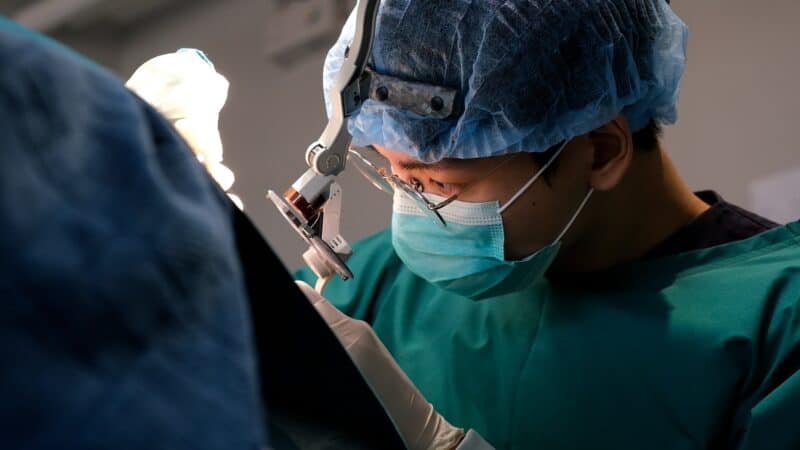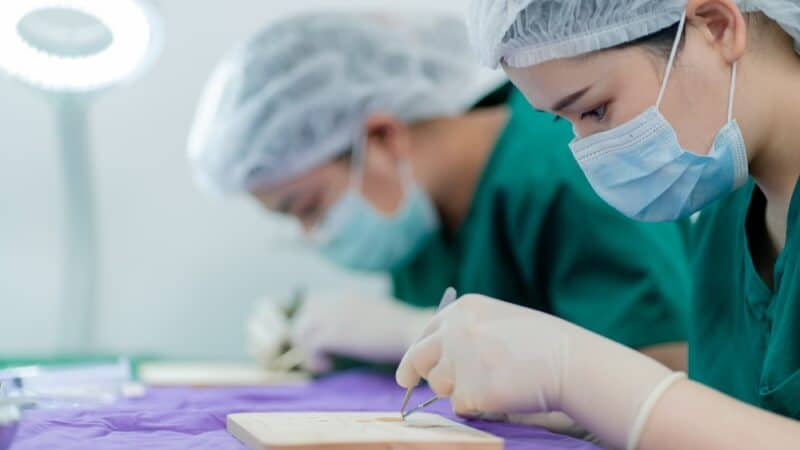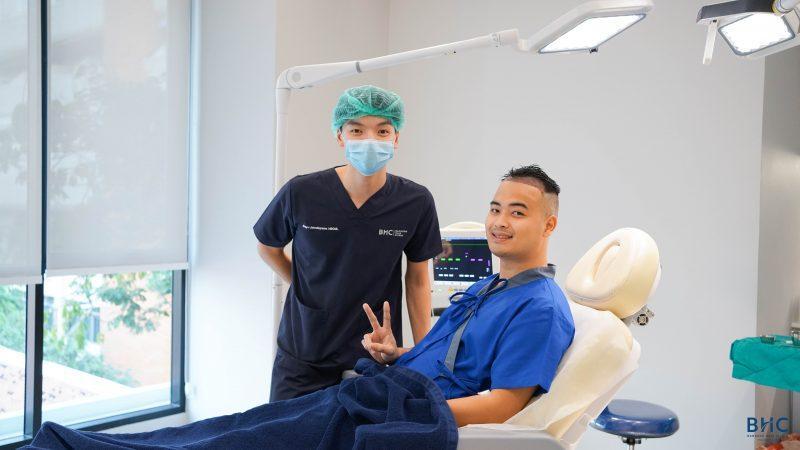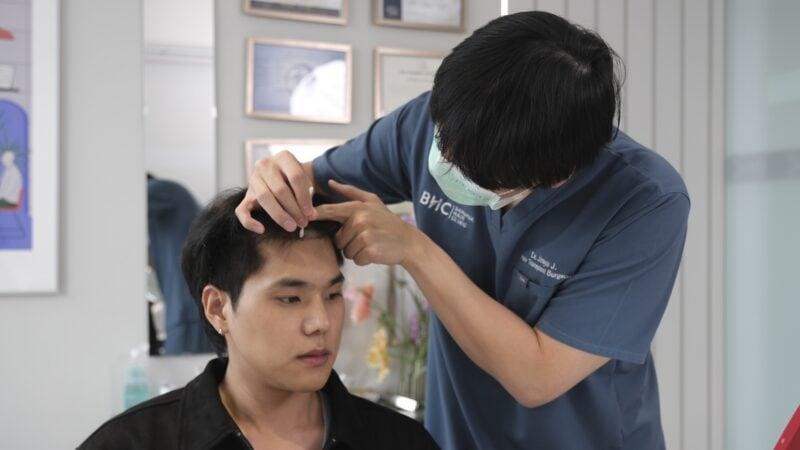
HAIR LOSS SOLUTION

HAIR LOSS SOLUTION
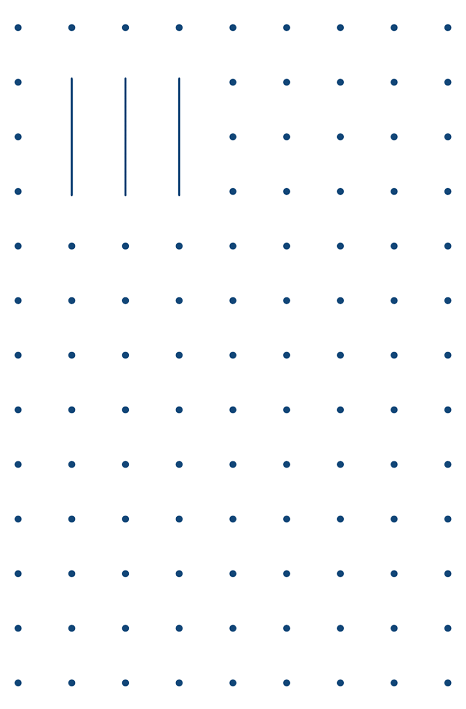

|
|
|
Doctor |
|
|
Profile |
A specialist in DHI (Direct Hair Implantation) hair transplant techniques, graduated from the University of Birmingham. He learned advanced hair transplantation techniques under the guidance of Dr. Tayfun Oguzoglu, a globally renowned hair transplant expert. Trusted by numerous patients, Dr. Jirayu has established a reputation for excellence in the field of hair restoration. |
|
Share |
|

At Bangkok Hair Clinic, the Shaven Direct Hair Implantation (DHI) technique is our most practiced procedure. This technique is developed from the standard Follicular Unit Extraction (FUE), where the patient’s hair is shaved to maximize the usable donor area. This is particularly suitable for patients with large recipient areas, as it allows for a greater number of grafts to be extracted and more accurate graft placement.
During DHI hair transplant, strong, permanent hair follicles are harvested from the donor area, typically the occipital scalp, using the FUE technique. These grafts are then implanted into thinning areas using a specialized implanter device. Unlike traditional DHI methods, where incisions and implantation occur simultaneously, we first create pre-made incisions in the recipient area to define direction, angle, and density. This approach allows for greater control and precision during implantation while still minimizing graft handling and mechanical trauma.



We exclusively use Lion Implanters from South Korea, trusted by leading surgeons for their precise control and ability to create incisions as small as 0.6 to 0.8 mm. This results in quicker healing, minimal scarring, and a natural hairline. Patients may resume daily activities the very next day.
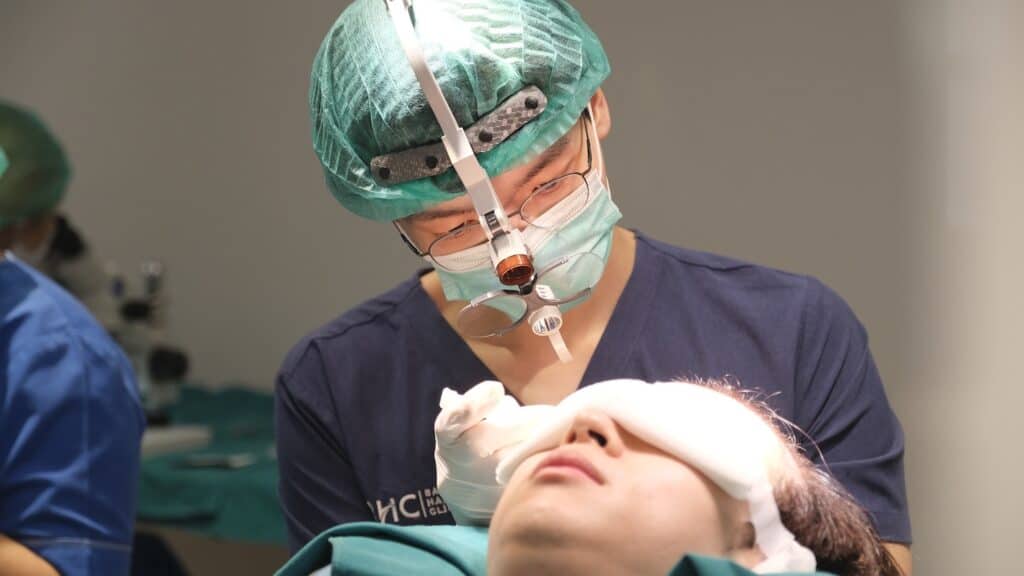


Hair transplant with DHI micrograft offers several clinical advantages:
DHI hair transplant patients are evaluated individually to determine the appropriate technique and number of grafts based on donor capacity, recipient area size, hair characteristics, and long-term goals. All surgical plans are developed in accordance with patient-specific needs and discussed thoroughly during consultation.
Micrografting involves carefully trimming excess tissue around each follicular unit after extraction under a stereomicroscope, eliminating the bulky “tadpole egg” look and creating compact grafts for:


1. Design & Planning: Surgeons sketch the new hairline
2. Local Anesthesia: Numbing plus gentle vibration to lessen discomfort
3. DHI Harvesting: Motorized punches to extract strong occipital follicles
4. Micrografting: Excess tissue is trimmed for a leaner, easier transition
5. Site creation: Tiny incisions to preset depth and orientation
6. Implantation: Grafts are loaded into Lion pens and precisely placed
7. Post-op Rinse: Saline is used to remove debris, and a bandage is placed on the donor zone
8. Recovery: Redness and scabs clear in a week




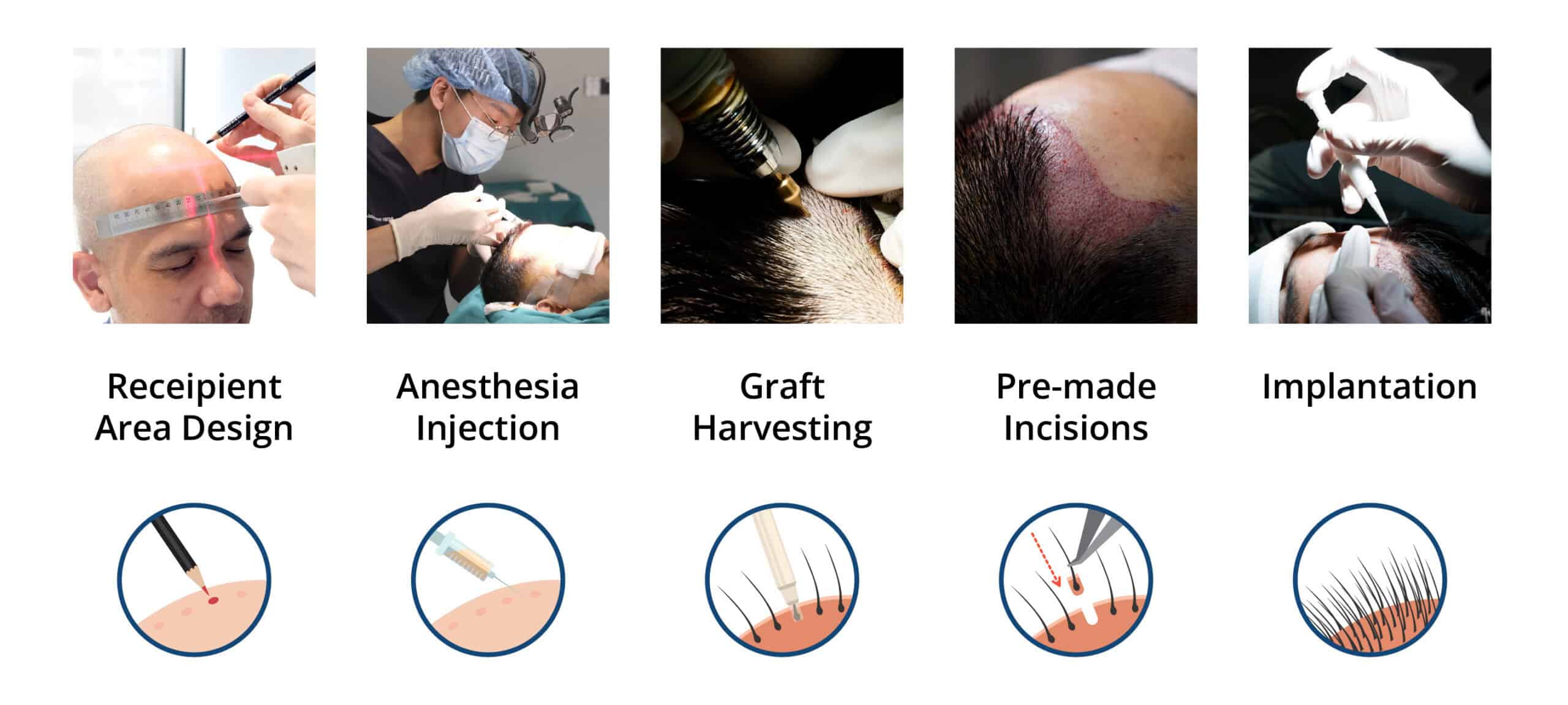
A typical DHI procedure takes approximately 6 to 8 hours, depending on scalp condition, number of grafts, and case complexity. To optimize graft survival, we follow the “first out, first in” technique, ensuring that the first harvested grafts are implanted early and kept out of the body for the shortest possible time.
At Bangkok Hair Clinic, we typically implant at a density of 40 to 50 grafts/cm² in areas of completely bald skin. The density may be adjusted to 20 to 30 grafts/cm² for areas with existing thinning hair to prevent damage to native follicles and ensure a natural appearance. Your surgeon will determine the appropriate implantation density for each area based on your scalp condition, degree of hair loss, and treatment goals.
DHI has over three decades of clinical use and is preferred by many patients over strip harvesting (FUT) due to reduced scarring and faster recovery. When DHI is combined with the use of implanters, grafts are handled less and protected from trauma, promoting higher survival rates. Our clinic follows ISHRS guidelines, and our physicians stay current through ongoing training and research on the latest techniques and best practices.
Local anesthesia is administered using refined injection techniques. Mechanical vibration, patient distraction methods, and optional light sedation are used to ensure minimal discomfort during and after the DHI hair transplant procedure.
After the DHI hair transplant procedure at our Bangkok clinic, patients can expect mild redness, scabbing, and minor swelling in both donor and recipient areas as part of the healing process, and subside within 7 to 10 days. Patients are given clear post-operative care instructions to support optimal healing and aesthetic outcomes.
A structured follow-up schedule includes in-person or virtual check-ins at 2 weeks, 1 month, 3 months, 6 months, 9 months, and 12 months to monitor progress and address any concerns. Additional treatments such as PRP may be recommended to support hair regrowth.
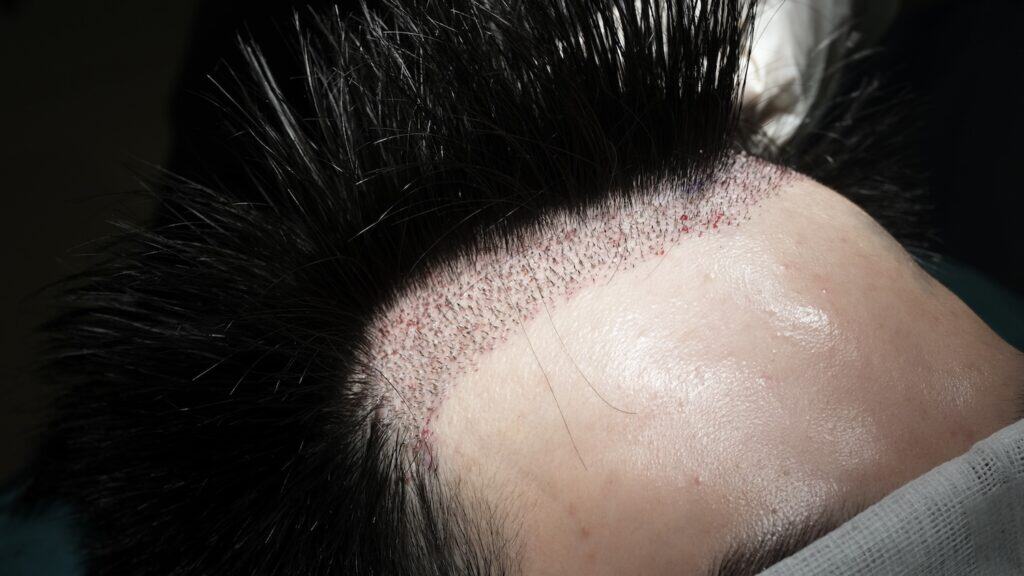
Faster Procedure & Recovery – Shorter surgical time and healing within 1 to 3 days.
Minimal Pain & Scarring – Less discomfort than FUT; tiny 0.6 to 0.8 mm incisions leave no visible linear scars.
Higher Graft Survival – The implanter technique minimizes trauma, preserving graft integrity and improving success rates.
Natural-Looking Results – Direct implantation allows precise control of depth, angle, and direction for seamless integration with existing hair. Results are more consistent with this technique.
Simplified Aftercare – Shaved donor area makes cleaning easier and reduces the risk of infection.
Versatile Styling – No linear scar means greater flexibility with future hairstyles.
Trusted Globally – Widely used and recommended by experienced surgeons worldwide
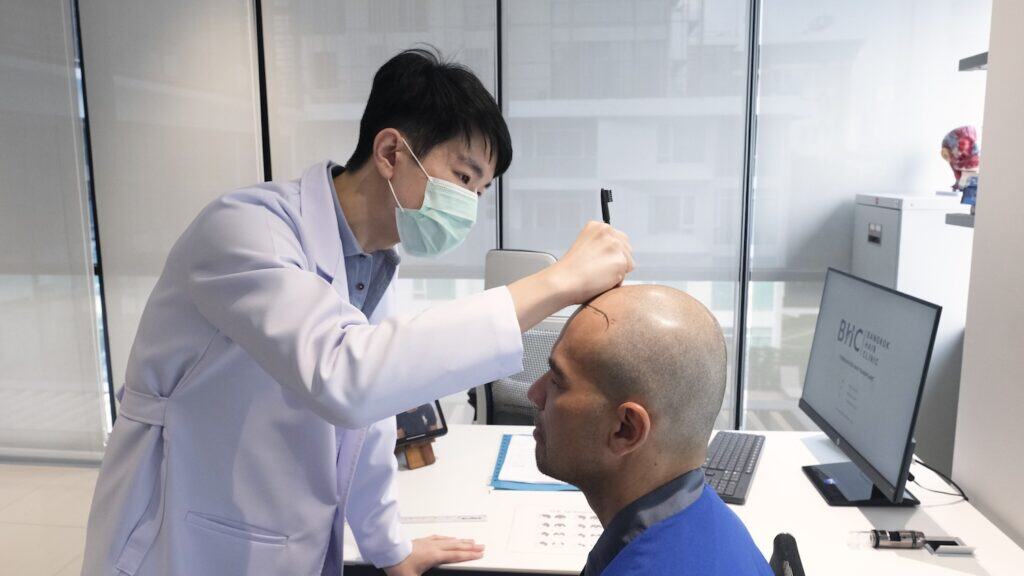



There are several factors to consider before choosing a DHI hair transplant:
You are a good candidate for a DHI hair transplant in Thailand if you:
We use advanced sapphire blades and the Lion implanter from Korea to ensure precise and effective implantation for every case.
Our approach minimizes the out-of-body time for grafts, preserving their vitality and maximizing success rates.
To maximize graft viability, we maintain an optimal temperature of 2–4°C throughout the procedure, store grafts in a proprietary holding solution, and rely on a highly efficient surgical team trained to work with speed and precision to minimize out-of-body time.
Our surgeons design and tailor each hairline to the individual by incorporating macro and micro irregularities (zig-zag patterns), ensuring that hairs are not placed in straight rows, but rather mimic the natural randomness of real hair growth.
We adhere to rigorous international protocols, which result in a lower shock loss rate (approximately 2.5%) than the standard 5%.
We carefully evaluate each case, selecting only suitable candidates for transplantation and maintaining a high satisfaction rate among our patients.
We offer high-standard aftercare and provide free revision or “touch-ups” if necessary to ensure the best possible outcome for each patient.
Learn more about the DHI hair transplant procedure and cost in Bangkok, Thailand. Book a consultation at Bangkok Hair Clinic today. Please contact us through these channels:
Line: @bangkokhairclinic (include @)
Tel: 02 118 7386, 064 196 3539
Email: bangkokhairclinic@gmail.com
Q: How painful is a DHI hair transplant?
A: Local anesthetic is used to reduce discomfort during the graft removal and placement process. Painkillers will be prescribed post-procedure.
Q: Will hair grafts fall out?
A: Initial shedding is normal; follicles remain under the skin and sprout new hair later.
Q: Can women get DHI micrograft hair transplant?
A: Yes. We often keep donor hair long and shave only a narrow strip that is hidden beneath surrounding layers.
Q: What if I lose more hair?
A: Medication, PRP (platelet-rich plasma), and laser therapy can help stabilize ongoing hair loss.
Q: What is the cost of a DHI hair transplant?
A: The cost of a DHI hair transplant depends on the graft count, density, and coverage. The donor quality, case complexity, and other treatments will add value and cost.
| DHI Shaven | DHI Non-Shaven | Long Hair DHI | |
|---|---|---|---|
| Shaving Required | Full shaving of donor area | Partial shave of donor area | No shaving of donor area needed |
| Procedure Time | Generally shorter (due to shaving) | Moderate | Longest |
| Healing Time | 7–10 days for visible recovery | Same as DHI Shaven | Faster healing with minimal trauma |
| Implantation Technique | Implanter after pre-made incisions | ||
| Scarring | Minimal dot scarring, usually hidden | Minimal scarring, better hidden | Minimal scarring, not visible |
| Ideal for | Patients comfortable with shaving | Patients wanting discreet procedure | Patients looking for instantly visible results |
| Cost | Moderate | Moderate | Higher (due to technique) |
| Maximum number of grafts | >3000 grafts | 1500-2000 grafts | <1500 grafts |
| Natural Look | Yes | Yes | Yes |
| Post-op Care | Standard post-op care | Standard post-op care | Minimal, gentle touching |
| Recovery Time | 1–2 weeks | ||
